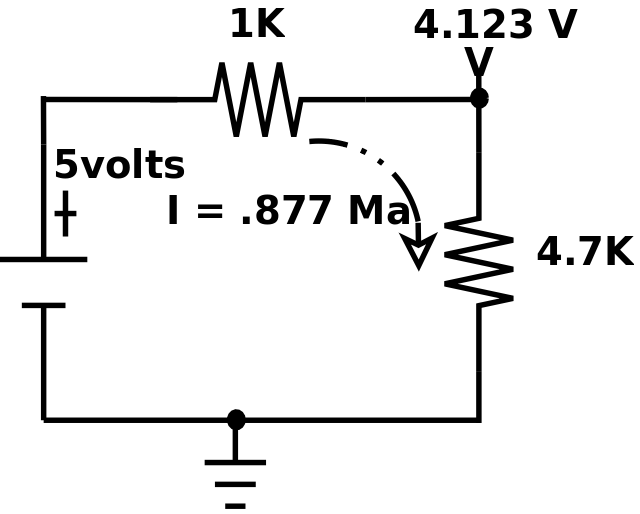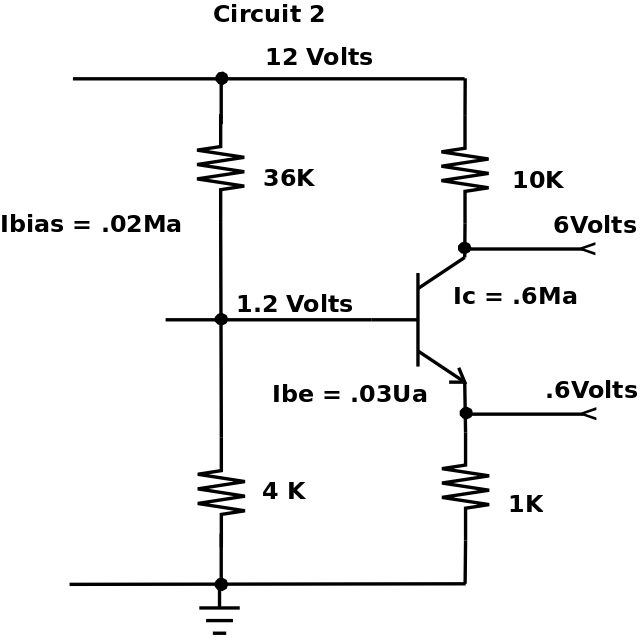|
Basic Electronics: 2
| |||
|
Basic Electronics: 2
| |||
This page will explain the design of a 1 transistor amplifier and how it works.

|
|
|
Silicon atom
|
In the section above, I am speaking of an element, a substance containing only one kind of atom. Two or more atoms of different elements can be chemically bonded into another substance, these are called molecules. When two elements with 4 elecrons in their valence shell are bonded together into a molecule, their atoms actually share electrons, happily. This is called a co-valent bond. Atoms are grouped by the number of electrons in their valence shell. When a group 3 or group 5 element is combined with a group 4 element, the resulting material can still have covalen bonds but there is either an extra electron or one is missing causing the resulting molecules to have a slight negative or positive charge. The material with extra electrons is called N-type while the material with a missing electron is called P-type. P-type material has holes where the electron is missing from it's atoms. Now if we fuse two N-type materials to a P-type material (P-type in the middle like a sandwich) we create a semi-conductor. We call the top N-type material: Collector, the P-type material: Base, and the lower N-type material: Emitter. If we make the Collector positive with respect to the Emitter the positive holes in the P-type material will prevent any significant current flow between Emitter and Collector. The transistor is 'OFF' (not conducting). If we make the Base positive with respect to the Emitter, electrons from the emitter will be attracted to the base and then, due to some quantum physics, to the Collector. Thus the transistor is 'ON' (conducting). The small E to B current will cause a much larger E to C current (again quantum physics), thus the transistor is amplifying (has gain).
Transistor:

Recap:
A transistor has 3 terminals, C (Collector), B (Base), and E (Emitter).
In and NPN transistor the primary electron flow is from E (emitter) to C (collector), controlled by a smaller flow of electrons from B (base) to E (emitter).
The Emitter emits electrons, the Collector collects electrons controlled by the emitter to base current.
The amount of current flowing through the transistor (E to C) is a multiple of the amount of current flowing from the base to the emitter (B to E).
This multiple is called the gain of the transistor.
Transistor:
A transistor is made up of two different materials, one is called 'P' and the other is called 'N'.
